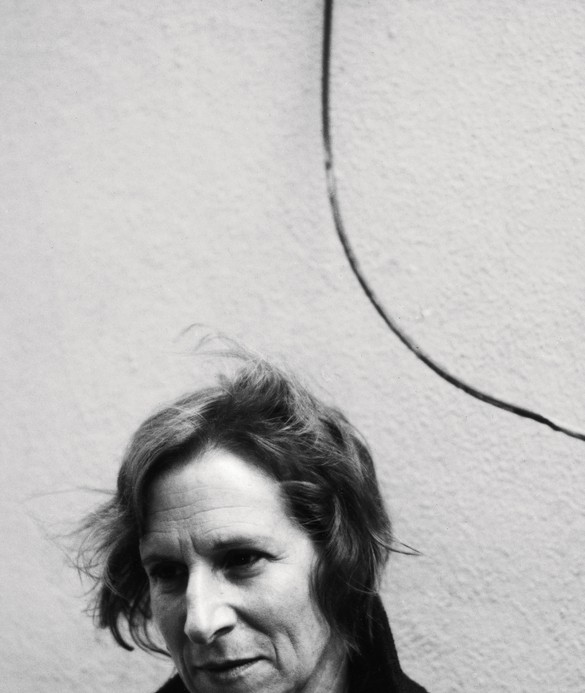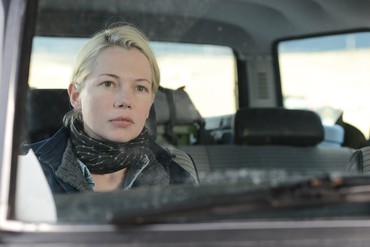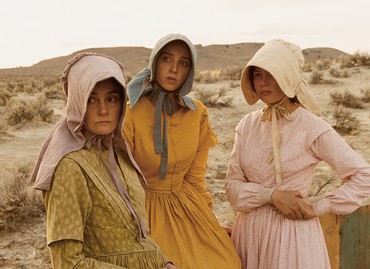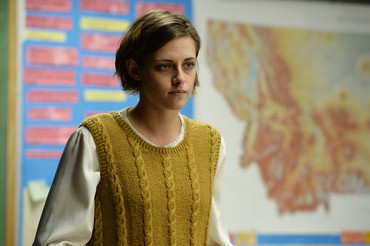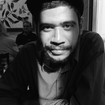
Carlos Valladares is a writer, critic, programmer, journalist, and video essayist from South Central Los Angeles, California. He studied film at Stanford University and began his PhD in History of Art and Film & Media Studies at Yale University in fall 2019. He has written for the San Francisco Chronicle, Film Comment, and the Criterion Collection. Photo: Jerry Schatzberg
What’s it like to experience a film by Kelly Reichardt—who, along with Terrence Malick and Frederick Wiseman, is among the most consistently exciting directors cranking out narratives in the USA? She has now made seven features. The latest, First Cow (2020), based on Jonathan Raymond’s The Half-Life: A Novel (2004), will receive more eyes than usually go to Reichardt’s films thanks to the ballyhoos of A24 producing it. First Cow offers another extension of Reichardt’s unbroken series of down-and-out drifter types, whose ambling ways were first haltingly enunciated in her debut feature, River of Grass (1994), a sedate Everglades reworking of the lovers-on-the-lam gun plays of yesteryear (They Drive By Night, Bonnie and Clyde, Badlands). Despite being a hit at the 1994 Sundance Film Festival, listed as one of the best films of 1995 by Film Comment, the Village Voice, and the Boston Globe, Reichardt was unable to make another narrative feature film for twelve years; she said in a 2011 interview that the “door wasn’t open” to her in the same way it was for other, male contemporaries, such as Kevin Smith (Clerks) and David O. Russell (Spanking the Monkey). As Reichardt puts it, “I had ten years from the mid-1990s when I couldn’t get a movie made. It had a lot to do with being a woman. That’s definitely a factor in raising money. During that time, it was impossible to get anything going, so I just said, ‘Fuck you!’ and did Super 8 shorts instead.”1 Those Super 8 shorts, Ode (1999), Then a Year (2001), and Travis (2004), were avant-garde experiments in elongation and duration, clearings-of-the-throat in preparation for Old Joy (2006; two male besties go camping in Oregon), which marked Reichardt’s re-emergence and initiated the third phase of her career: the now-familiar pared-down narrative style, which she would continue to refine in Wendy and Lucy (2008; a poor drifter and her dog get stuck in Oregon), Meek’s Cutoff (2010; a caravan of 1820s settlers encounter a Native American man on the trail to modern Oregon), Night Moves (2013; three would-be fundamentalists bomb a dam in Oregon), and Certain Women (2016; people in Montana are lonely).
First Cow opens with a line of William Blake’s: “The bird a nest, the spider a web, man friendship,” suggesting Reichardt’s lack of interest in recording “known” facts whose sole purpose is to tame life’s pulse into a straight ray. Reichardt is less interested in showing you the twig (though she’s damn good at making you see a twig like you’ve never seen a twig before) and more interested in revealing the protective, Mother Hen impulse that provokes the bird to turn the twig into a nest in the first place. First Cow will be welcomed with five stars and cries of “Masterpiece! Masterpiece!” as Reichardt’s sunniest and funniest film, but such truisms threaten to simplify the hard-edged nature of the film’s unsentimental humor. It starts with textures—the soft fur of a fox tail, a bushy owl that takes ages to budge its head, an aphoristic phrase or two from Raymond (Reichardt’s regular screenwriter)—before sliding into a Plot: two outsiders—one Chinese (Orion Lee), one white (John Magaro), both softies—need a place to rest their head for several nights (Old Joy territory) before they embark on an extraordinary American hustle as honey-glazed-biscuit bakers. The batter is made from the milk of the titular bovine, owned by a regal English nobleman (Toby Jones); he is as out-of-place as Lee or Magaro within the rocky American terrain, but Jones, crucially, comes from money. At one point, the camera, in love with the kind of valueless minutiae that don’t add up to blowout receipts at the box office, slips into Lee and Magaro’s tent and we are made to sense the comfort of their makeshift mattress, cobbled together out of itchy, termite-infested beaver pelts. In the Pacific Northwest of First Cow (an alternate title could have been “Love in the Time of Capital”), everything of import happens in the teeming margins: a teen boy’s unmuddied shoes are elevated to “fancy boots, lad, fancy boots” by a hermit from mumbly Robert Altman land (the now-late René Auberjonois, a regular player in the legendary Altman stock company). Reichardt’s knack of sketching out entire stories with only the most transitory pillow shots reaches new heights in First Cow: a drunk man snores at a campfire, a pail of milk sloshes as it is carried by a young Native American girl in a red dress (a sound rhymed by the splashes of water lapped by a dog drinking faster than its tail wags). In such moments Reichardt completely upends the silent-era screenwriting teacher Frederick Palmer’s classic distinction between movement or motion and action, a distinction that nearly all American narrative movies have hewed to since 1919: “One might write: ‘The whirring blades of the electric fan caused the window curtains to flutter. The man seated at the massive desk finished his momentous letter, sealed it, and hastened out to post it.’ The whirring fan and the fluttering curtain give motion only—the man’s writing the letter and taking it out to post provides action.”2 Reichardt’s genius is centralizing “mere” movement and relegating action to the periphery. Singularized, sharp, cool, her movement lets us feel the beauty her two migrants feel in the brisk, pine-scented air they breathe in with such ease.
Certain Women, based on three world-weary short stories by Maile Meloy, is a depressed Montana triptych in which Zamboni machines, corgis, paper napkins, lint rollers, and unfinished jigsaw puzzles are the lead heavies, stealing attention from big stars such as Laura Dern, Michelle Williams, and Kristen Stewart, who themselves disappear into the shells of loners with names like Laura, Gina, and Beth. The film moves like an Altman film, most of all his revisionist western McCabe & Mrs. Miller (1971), whose unglamorous bearskin-coat-wearing hustlers and shivering prostitutes speak in mutters, as if their mouths were stuffed with marbles—which is to say, they barely speak at all, because the historical record (with its knowing, cloying finality) cannot pick up what they’re saying with any clarity. Indeed, most of the characters in Certain Women, and in most of Reichardt’s films, are fated to live hidden lives and to rest in unvisited tombs. Auberjonois, one of Altman’s favorite actors, appears in Certain Women as a decaying, Alzheimer’s-riddled grandpa named Albert, who wears a gray polo and frayed blue cardigan, looking ready to be taken by demented Death. Next to him, Williams’s Gina (running around in shiny-bougie Patagonia track suits) is leechlike as she pines after the bricks of native sandstone that gather dust on Albert’s property. What’s eerie about this scene is the memento mori that pile up around Albert and Gina: the useless remembered facts that fly out of Albert (a three-note whistle, used to attract quails, that comes straight out of Altman’s M*A*S*H), reminding us that this tattered old man, once young and sprightly, will soon be forgotten. To his grave he will take all the intimate love he has of the sandstone, which, according to Albert in one of his sputtering fits of talk, “used to be the old schoolhouse, you know, when the town was settled. . . . It was cut from the massive sandstone around here. . . . The schoolhouse was built before the church. . . . I never thought it a pretty church, even when I thought I might get married in it.” Each memory that Albert lets loose is doomed to dissipate, steamlike, back into the atmosphere of the present, when the best years of his life have left him: “You know, my brother and I—he’s dead now—we used to . . . ”
Albert does not realize that Gina does not realize the significance that the bricks have for Albert, but neither will Gina’s Gen Z daughter realize the significance that the bricks will have for Gina. The daughter holds up a mirror to her mother, reflecting back the sullen opportunist that Gina is; the daughter is as obsessed with the monotonously present unreality of her iPhone as the mother is stuck on her plastic cups and shiny dreams of grills made from native sandstone. No one within the film realizes any of this; we see it all. Suddenly, my attention is pierced, in the style of Roland Barthes’s punctum, by a jigsaw puzzle lying dormant, unfinished, in the corner of Albert’s living room. Gina doesn’t notice it, and her husband, Ryan, is barely in the scene so he wouldn’t see it either. But this jigsaw puzzle is what occupies Albert’s quiet “down” moments. It’s his life. In the same manner, I recall how the jigsaw puzzles of Andrew Wyeth paintings that my grandmother worked on before her death became her life as well—how I saw that they became her life, but was never quite able to figure out why.
Back in 2008, Reichardt proved that she could turn even the mundanity of a parking complex into an event. In Wendy and Lucy, we seldom venture past the empty, white-chalked lines of a neocapitalist Walgreens lot. The film was released in post-Katrina America just a few months after the first rumblings of the subprime mortgage crisis, and its period shows—not through any of what the bitter characters say (which, again, is not much—a compliment to Raymond’s cultivation of nonflash), but through the way a homeless white Indiana drifter (Williams) burrows her ashamed eyes into the ground and mumbles “Thank you” every time someone gives her money, a flip phone, or thoughts and prayers. Wendy and Lucy begins with a sliding horizontal track that follows a woman walking her dog through the forest, the same kind of camera track used by the postwar Italians—Pier Paolo Pasolini in Mamma Roma (1962), Bernardo Bertolucci in 1900 (1976), Francesco Rosi in Christ Stopped at Eboli (1979)—when they wanted to allegorize the relentless forward flow of history, and to visualize that movement in the language of film. Wendy is always humming to herself, a simple, eerie four-note tune that floats throughout the film like an incantation. It’s heard during the opening camera-slide into the Great Recession, and it’s picked up, Long Goodbye style, by the muzak in a local Jack’s Grocery—the last decrepit remains of a mom-and-pop America, before gas stations, convenience stores, and phones were rebranded as Shell, Walgreens, and Apple. “I’m just passin’ through,” Wendy repeats over and over, to any stranger who bothers to acknowledge her existence. She has convinced herself that her downward spiral is only temporary and only affects herself; soon, she tells the old Walgreens security guard with the bushy white brows, she will be working at a cannery in Alaska, and it’s at that point that she expects a community will emerge. She has no money; but this, too, will pass.
Each line of dialogue in a Reichardt film is chemically refined to give only the minimum of exposition.
There’s no dreamy or communal uplift anywhere in Wendy and Lucy. It confronts us with the raw logistics of what it looks like to be a drifter/dreamer in 2008 America: a cold state, and, if you are a young woman, one of constant psychic violation. Color is drained in this world, as it will be again in Night Moves (a drab palette of green-black covers Dakota Fanning and company) and Certain Women (as brown and as stubbornly withdrawn as a Wyeth wheat field). Williams in Wendy and Lucy has meticulously removed all quirks of movie-star charm that would bog down or distract from Wendy’s antisocial power walks or from her dead gaze, which focuses fetishistically on peat and weeds and shit, her only friends on the ground. Wendy and Lucy is, in part, Reichardt’s tribute to those houses passed on the highway on the way to a big party in the big city—that flash second when, seeing those houses, one begins to imagine the lives of the people who live in this rattling apartment or that broken-down car, the lives of the petty kids who mistake Christian neighborliness for ratting out a starving vagabond and dooming her to jail and her dog to the pound, the petty old men and old women who themselves will die without having ever asked the neighbors who lived fifty feet to their right about something, anything, other than how’s the weather. Reichardt extends that flash second to eighty minutes. She herself is just passing through.
Meek’s Cutoff is a late-blooming western, another monotonous miracle. Reichardt is treading the prime territory of Budd Boetticher, another similarly unsentimental American director whose westerns are anchored by unchanging, ungiving faces tired of life (Randolph Scott for Boetticher, Williams for Reichardt), and whose stealth concern is how many different permutations of trees-rocks-cacti can be configured across seventy minutes. Meek’s is about the hardship of hauling stuff thousands of miles by wagon (a process never more aridly depicted in the movies). Zoe Kazan, in a fried yellow dress that has lost all its MGM prairie charm, chases her hat blown away in a windstorm, which gives Reichardt and cameraman Chris Blauvelt an excuse to stage a breathtakingly parched scene: as Blauvelt cranes up to the heavens, Kazan is pinched into the punishingly cracked and craggy desert ground, while the camera does a sideways slide over her head. The resulting image suggests a scary-open landscape watched over by the eye of a Kenji Mizoguchi ghost-god who has long lost patience with these miserable pilgrims. As in Night Moves, an eco-terrorist thriller that elides the terrorism and flattens the thrills, we’re often left in states of tedious anguish because we don’t know what will happen next. Reichardt fanatically refuses to signpost anything that might smack of a main event. Time and again in her work, we’re left to ponder the eerie nondimensions of endless pitch dark: a lantern that does not light the scene (Meek’s); a campfire that chills (First Cow); Jesse Eisenberg’s on-location truck cycling through the Oregon forest night as if it were stuck in Alfred Hitchcock’s rear-projection booth (Night Moves). In Meek’s, Reichardt leaves in all the sixty-three seconds it takes a pioneer woman to shoot a rifle, reload it, then shoot it again. People will often irritatingly tag as “slow” Reichardt’s love of stretching scenes far beyond a normal Hollywoodish length, a complaint that devalues the spillover life captured in her empty shots of wagons wheeling, or of morning-after hookups dressing to start a gray work day. Monotony that would ordinarily drive someone to madness is given ascetic lift by Reichardt’s framing: Blauvelt’s sleek white moonglow over the river in Night Moves; Stewart’s dabbing of her lips with a diner’s white napkin that still has the spoon and knife inside; the bare white wall in the apartment where an affair has taken place, the white paint scraping like a Clyfford Still painting. This last item—a wall with a dinginess like the hotel room that starves John Cassavetes and Peter Falk in Elaine May’s Mikey and Nicky (1976)—divides the two Certain Women lovers from each other; at break of day, they don’t want to see the fat paunches that the night kept hidden.
Whence Reichardt’s obsessive concern with little things? Last April, she came the closest she’s ever come to writing a director’s manifesto when, in Film Comment, she published “Surface Funk,” a brief but telling essay about her admiration of the painter and film critic Manny Farber. In the essay, she sweats over an ambiguous observation of Farber’s about Altman’s magnificent Nashville (1975), which he is both maddened and fascinated by, calling Altman “a Svengali of surface funk.”3 Maybe this is also what Reichardt hopes to achieve as a director: to be an unseen cataloguer of microcosmic actions and gestures that stick in the mind, working like the aging all-male squad who make sure the model trains run on time in Jean-Pierre Gorin’s Routine Pleasures (1986). One paragraph of “Surface Funk” in particular betrays Reichardt’s obsessions:
Lately, Farber’s paintings have me considering my desktop. His table-scapes are way more fun and mysterious than the stack of bills and to-do lists I’ve got laying around. Farber has railroad tracks that split and circle around making his desk a great expanse. He has lollipops and Tootsie Rolls, tiny neighborhoods, a few dead bodies, a dog trekking across the plains of his desk, and a train track that just breaks off. He has land-locked boats, grounded airplanes, cars parked on spiral-bound notepads. For all we know, the dog may be carrying a message. God knows what that train is hauling. Bright colors section off one area from another. His desktops are like a board game version of Richard Fleischer’s Violent Saturday, or the last quiet moments of normal, small-town life before [Sam] Peckinpah’s men jump into action. You can almost hear the far away sound of children playing.4
“God knows what that train is hauling”—a mysterious elision, yet the film artist is able to conjure a scene by the careful selection of oddball details: those ambulances and speedboats and flying saucers that have been beached and abandoned on the shore, those Tootsie Roll wrappers a kid and her kid-date toss across the sticky cinema floor. There are two words for this kind of philosophy, which starts from the particular and webs ever outward: “termite art,” as described in Farber’s groundbreaking 1962 essay “White Elephant Art vs. Termite Art.” In the style of Howard Hawks or Ousmane Sembène or early Werner Herzog, Reichardt starts with small concerns and an endless series of questions (Old Joy: what kind of bird is heard in the remote Bagby Hot Springs, east of Portland, Oregon?) in order to branch out and reveal fresh, pinecone-sized insights about human relationships in the twenty-first century (“Man friendship”). In this process of discovery, she neatly avoids all of the white-elephantine filmic tendencies of the new century: the fashionable cynicism-nihilism-pessimism (Lobster/Deadpool cinema), the rapid-fire editing that grabs the social-media addict’s attention but does little with it, the segregation of politics and art that values one over the other instead of seeing them within and through each other, the postmodern self-referencing that never stakes out anything original because the postmodernist is frozen in place by the weighty notion of a constantly recycled Now.5
The time of Reichardt’s films doesn’t show—a good thing, for she is in the business of making bewitching images that have life beyond a day (so against the current trend for one-day ephemerality!). In Certain Women there’s the hellish image—very 2016, but also indicative of bogged-down-by-capital moods that are evergreen—of an indigenous man in full-on blue-feathered regalia ordering orange chicken at a knockoff Panda Express. I think the miracle is that Reichardt can make a Red Desert (1964) out of a strip mall without ever resorting to the now-cliché imagery of “Antoniennui” (blank-faced and pursed-lip mannequins crawling at an unsettling zombie pace, yellow daisies in gray industrial landscapes, wide open fields of sinister green, blonde photographers with empty blue eyes, etc.). All the same, she taps into Michelangelo Antonioni’s ingenuity while renewing it for our current moment. She’s a common-sense storyteller; the type of material that she shoots and edits cannot be instantly gratified or commodified in the hooks department, and she strays so far into the atmospheres of her brooding people that she refuses to consider the “both sides” of their world, like a false demigod. It’s obvious in 2019 that the climate leftists of Night Moves’ 2013 have the right political hunches, but she’s sly in showing them as messy, fear-filled, kiddish idiots first, political symbols later . . . or, well, not at all. Fanning, Eisenberg, and Peter Sarsgaard are jealous, horny, puny minded, jaded, confused, and idealistic in pure quarter-life-crisis mode (in an age where a new generation has grown up cracking cynical jokes that they’ll never have to pay off their student loans, they’ll be dead by then, so why worry). Each line of dialogue in a Reichardt film is chemically refined to give only the minimum of exposition; otherwise, we bump like atoms through the roughly contoured shapes of her characters’ bitter lives, which stop before those lives get assimilated into the zone of the grander, fixed, easy-to-digest narratives with which most US directors are comfortable.
In my favorite of her films, Reichardt teases us with big climaxes, as big as the bomb exploding the dam in Night Moves, but she instead pivots and ends each of her Certain Women stories in sad, dejected puffs. A would-be gunman (Jared Harris) is captured off-screen, and sits glum-faced in the back of a police car in dead-still embarrassment. Auberjonois simply recedes McCabe-style back into his empty house, into the cobwebs of his jigsaw puzzle, as his memory-scarred native sandstone is hauled off to serve as the base for God-knows-what-grill. Perhaps the most moving moment in all of Reichardt’s cinema comes when the brilliant Blackfoot/Nez Percé actor Lily Gladstone, drowsy and heartsick after being ghosted by Stewart’s millennial lawyer, falls asleep at the wheel of her truck and slides off the side of the freeway into a nondescript field of brown. There are no trees to portend a fiery crash; there is only a fence made of chicken wire, which the truck easily plows through, and the unsexy forces of friction that bring the truck to its natural halt: no fanfares, no tears (from the actors), just a sleepy rancher who is offered a glimpse of excitement before she is hurled back into routine, into the humdrum daily.
1Ryan Gilbey, “Kelly Reichardt: How I trekked across Oregon for Meek’s Cutoff then returned to teaching,” Guardian, April 8, 2011. Available online at www.theguardian.com/film/2011/apr/09/kelly-reichardt-meeks-cutoff (accessed December 21, 2019).
2Frederick Palmer, quoted in David Bordwell, Janet Staiger, and Kristin Thompson, The Classical Hollywood Cinema: Film Style and Mode of Production to 1960 (London: Routledge/Taylor & Francis E-Library, 1985, 2005), p. 14.
3Between 1967 and 1975, Manny Farber’s film criticism was the result of a collaboration between him and his then partner, later wife, the painter Patricia Patterson. These pieces, Farber’s best, must be seen as the product of two sensibilities. See “Manny Farber and Patricia Patterson Interviewed by Richard Thompson,” Film Comment 13, no. 3 (May–June 1977), pp. 36–45, 54–60.
4Kelly Reichardt, “Surface Funk: On Manny Farber,” Film Comment, April 17, 2019, available online at www.filmcomment.com/blog/surface-funk-on-manny-farber (accessed December 23, 2019). The essay was initially written to appear in Manny Farber: Paintings and Writings, ed. Michael Almereyda, Jonathan Lethem, and Robert Polito (Los Angeles: Hat & Beard Press, 2020).
5The only questionable patch of Night Moves is an artificial, unusually flashy camera-crane-into-the-ceiling shot of Jesse Eisenberg in the library browsing the Internet and discovering that his shenanigans with the dam have killed a camper. Reichardt is rarely as obviously beholden to her influences as, say, a Quentin Tarantino or a Noah Baumbach, so the direct allusion to a crane shot in Alfred Hitchcock’s Shadow of a Doubt (when Teresa Wright goes to the local library, thumbs through old newspapers, and realizes with horror that her uncle Joseph Cotton is the Merry Widow murderer) is jarring. Luckily, the film’s ecoterrorist triad (already an elephantine character type in 2011) are infected less by that kind of razzmatazz and more by the spirit of Shadow of a Doubt’s mopey waitress (Janet Shaw), one of Hollywood cinema’s great supernumeraries.
